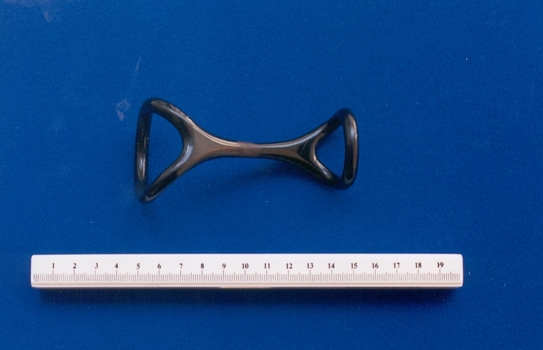Historical information
The pessary was originally regarded as an instrument and made from cork, ivory, hard rubber or gum-elastic. In later times, they were made from black vulcanite, flexible tin, soft copper wire covered with Indian rubber, and celluloid. The form of the pessary was and still is variable -either round, oval, or moulded in some cases combining three or four curves depending on the size of the pessary.
In ancient times, medicated pessaries were made from emollient. astringent and aperient. Several of these are still used, but in more modem times are called vaginal suppositories. Anal suppositories are still used to suppress the pain of haemorrhoids.
Physical description
Moulded black vulcanite pessary. Pessary is irregular in shape, and in the "eyeglass" stem style.
Subjects
References
- George Tiemann and CO. 'Surgical Instruments Catalogue', 1989
- Allen & Hanburys Ltd., 'Surgical Instruments and Appliances', 1906
- Thackray, Charles F Ltd., 'A Catalogue of Surgical Instruments and Surgical Sundries', Miniature Edition, 1930

